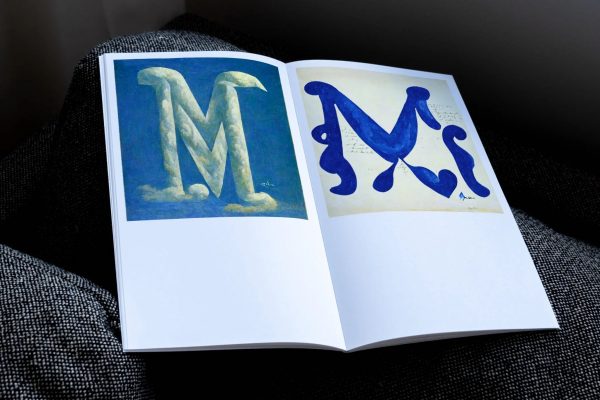AI Images, Status & Culture, and Some News
This post went out to subscribers to my Substack newsletter on October 8. Check out all the posts, including ones from the archives not reposted here, and subscribe here.

The image above is Tony Morley’s entry into my contest asking for visions of a positive future. Tony used the AI image engine from the team Midjourney with the prompt “Metropolitan skyline of a city in North Africa.” He writes that it represents, “A future where the newborn daughters and sons in Mali and Niger have the same life expectancy and living standards as those of the United Kingdom.” Follow Tony’s explorations of progress on Twitter. The deadline for entries is October 31 and the contest is described in this post. Please spread the word—and enter!
Speaking of AI image engines, I was inspired by the dismal landscape at the top of this post on nuclear power by Jim Pethokoukis to wonder why cooling towers (nuclear or otherwise) can’t be painted to look cheerful. That led to some fooling around with image generators, primarily Stable Diffusion. Attempts to create images of cooling towers painted with murals confirmed something that my long-ago Harvard Extension Hebrew teacher said: “Prepositions are the hardest part of a language.” Stable Diffusion had a tough time understanding that asking for a mural on a cooling tower is not the same as asking for a mural in a cooling tower or a mural of a cooling tower. (A few days later I saw this Astral Star Codex post, from which I learned that the difficult preposition problem is called “compositionality” in AI circles.) But I did get a few reasonable results.

Imagine the murals people with actual artistic skill might come up with. Maybe the intimidating dull gray of cooling towers reflects technical issues that water towers—like the famous Gaffney peach—don’t face. But finding a way to make cooling towers look friendlier would go a long way to improving nuclear power’s public image.

In the revitalized (now web-only) Print Magazine, Steven Heller interviews Andrea A. Trabucco-Campos and Martín Azambuja, the designers behind a project using AI prompts to create typography in the styles of iconic artists. They’ve recently published some of the results in a book titled Artificial Typography. From the interview:
Is “artificial” the best way to describe this material or is there another word that better describes what you are doing?
Artificial Typography is an obvious wordplay we loved as a book title due to its immediacy and relation to Artificial Intelligence (AI). It also lends itself to a series of books we’re thinking about publishing in the future, such as Artificial Architecture, Artificial Objects, etc.
Beyond that, “artificial” is an accurate way of describing these images if we consider the mode of creation and how this word is commonly understood: something not existing/originating in nature, rather produced by human processes. It is doubly removed from us since it is not just created by our hands with tools (think a letter drawn by a pen, brush or Illustrator), but instead produced semi-autonomously by machines and systems we’ve created.
Initially, we were also enamored by the idea of “conversation” and played with it as a title. The exchange that happens with AI machines is a form of conversation, and perhaps one of the most intellectually satisfying visual-verbal connections that have been devised between human and machine. As mentioned, you feed it a text prompt and through a simple string of words and their order, the AI system generates images that are sometimes unexpected, sometimes weird, sometimes ugly, and quite often stunning. You then can keep on iterating on the images or versioning the ones that are most successful, as well as tweak the text prompt and learn how the AI reacts to subtle or drastic shifts.
I like this notion of “conversation,” which captures the iterative process as well as the nature of the best conversations. You have a general idea in your head and you try to express it in words. The system in effect says, “Do you mean this?” And the back and forth proceeds, with the two of you trying to come to a common and pleasurable understanding that makes something new in the world.
Even in their current limited state, AI image generators are changing how we work with images in a visually saturated culture. The better image generators get, the more we’ll use them—and the more we’ll need to remember that seeing shouldn’t necessarily be believing. (The negative hot takes practically write themselves.)
Will Knight, who covers AI at Wired, has written several interesting articles on image generators, including one making the point that they can enhance human creativity.
People who have been granted early access to DALL-E have found that it elevates human creativity rather than making it obsolete. Benjamin Von Wong, an artist who creates installations and sculptures, says it has, in fact, increased his productivity. “DALL-E is a wonderful tool for someone like me who cannot draw,” says Von Wong, who uses the tool to explore ideas that could later be built into physical works of art. “Rather than needing to sketch out concepts, I can simply generate them through different prompt phrases.”
I could imagine image generators making those supposedly worthless art history degrees hot commodities. Although Stable Diffusion understands what the style of Keith Haring is, it has a much harder time grasping what makes Carlo Crivelli so weird and distinctive. (It’s not the Renaissance architecture and clothes.)
Latest writing and some news
My latest article is a review of W. David Marx’s Status and Culture for the WSJ’s fall books issue. Here’s an excerpt:
“Status and Culture” is blessedly free of the moralizing that so often mars analyses of status. Mr. Marx recognizes that status and status-seeking are human universals: “All status symbols rely on objects and behaviors with practical or aesthetic value that enrich our lives,” he writes. But the book often feels anchored in the second half of the 20th century, when the Beatles, Pop Art, and preppy style were salient examples and mass media essential to cultural diffusion. It doesn’t reach back to, say, the Italian Renaissance to more fully test its theories. Only in the final chapter does it begin to explore our own “era of vast quantities, deep specificity, and breakneck speed, where few individual artifacts, artworks, or conventions leave a dent in society or bend the curve of history.”
In today’s sea of instantly available, constantly ranked cultural production, Mr. Marx argues, everything and nothing has cachet. The result, he worries, is to “debase cultural capital as an asset, which makes popularity and economic capital even more central in marking status.” In some ways, the world he describes sounds like the 1950s, with the culture of TikTok as the new mass media, and “keeping up with the Joneses” measured in likes.
Now, however, individuals with specific passions and tastes can find the things they value far more easily. “We live in a paradise of options, and the diminished power of gatekeepers has allowed more voices to flourish,” Mr. Marx acknowledges. “The question is simply whether internet content can fulfill our basic human needs for status distinction.”
The book is a nice introduction to the literature on status—the bibliography is remarkably comprehensive—but, as those who’ve read The Substance of Style might predict, I have some disagreements with Marx’s single-variable explanation.
And now, the news….
After more than 11 years as a contributor, I’m leaving Bloomberg Opinion. When I first joined the then-new Bloomberg View in May 2011, I figured it might survive three years. Happily, it’s still thriving. But we’re parting ways, as I’m want to pursue more in-depth writing opportunities, including idiosyncratic history- and textile-related projects, and they want to focus on a tighter group of frequent contributors. It’s been a good ride: great editors, freedom to choose topics (within the constraints of a news-pegged column), and old-fashioned pay. Here’s hoping they forget to cut off my access to the other side of the Bloomberg paywall…
Assorted links
The case for abolishing the National Environmental Policy Act: It’s a strong one, made by Jeremiah Johnson at Liberal Currents.
Everything you never knew you wanted to know about Baltic birch plywood, by Anna & Kelly Pendergrast at The Prepared.
Excellent Q&A with Scott Lincicome about industrial policy, interviewed by Jim Pethokoukis (podcast and transcript). Excerpt:
What if the policy was, “Here’s how we’re going to deal with climate change: We need to pull carbon from the air”? Carbon removal technology is something that doesn't really exist right now, other than in some very experimental forms. “We're going to fund it, just like Apollo, just like the Manhattan project.” Would you favor something like that, assuming you thought there was the actual need to pull carbon from the sky?
The industrial policy approach is that we need that carbon capture technology to be made by Americans in America. And not just deployed by Americans; we need it made in America. Whereas the more free-market approach would be a prize: We don't care how it's made. We don't care who makes it, with a few security-related exceptions. If tomorrow the Korean government or Samsung or whatever comes up with the most amazing carbon capture technology in the world — it's like Mr. Fusion from Back to the Future, you just slap it on a power plant and suddenly we're zero emitters — you win the prize. We don't care that it was made by a Korean company. We don't care that they are going to be Korean jobs and not American jobs. No, the industrial policy side says, “We care a lot about who makes this stuff and that it's made in America, using American materials.” The pandemic, for all of its terribleness, provided us a pretty good example of the industrial policy approach to pandemic stuff and the market approach. And that's in the vaccines. The more free-market approach, essentially a prize but a procurement contract, was we went to Pfizer and BioNTech, and if you look at the contract for those vaccines, it said we have nothing to do with your supply chain. “We don't care how you do it. We don't care what you do. Just get an FDA-approved vaccine and we are all in, we're going to pay.” That's it. There are clauses in that contract that literally say we will have no control over how you make this whatever. A ton of global collaboration, of course. BioNTech is a German company, blah, blah, blah.
Several people have sent me this Scientific American article about Michèle Hayeur Smith and her work on what Viking textiles tell us about women’s roles. Careful readers may recall that I drew on her work in chapter five of The Fabric of Civilization, where I wrote about textiles used as money in Iceland, as well as China and West Africa. She has since published a book, and I was able to enlist her to give a talk to the Southern California Handweavers’ Guild, which you can see on my YouTube channel (please subscribe to my channel and watch my videos so that my numbers get high enough for YouTube to share the money from those annoying ads):